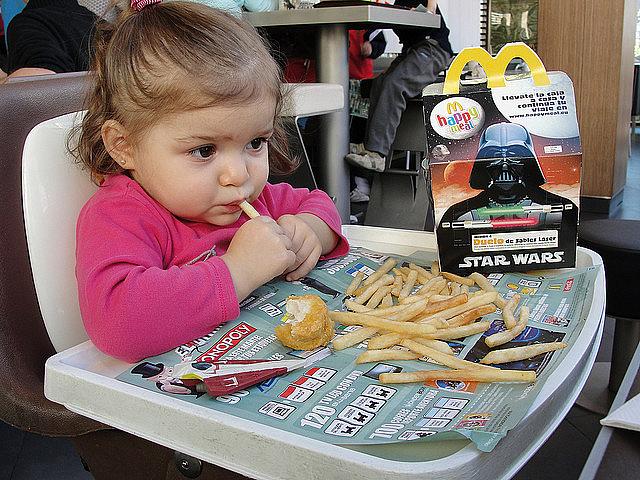Editorial Shorthand Fails Our Debates on Public Health

Casting an effort to pair toys with healthier meals rather than Happy Meals as a "ban" can bias the public against such policies.
In 2010 and 2011, ChangeLab Solutions worked with Santa Clara County, Calif., and San Francisco as they implemented policies designed to pair healthier kids’ meals with toys and prizes given away by fast-food restaurants. The goal was to encourage kids to eat lower quantities of sodium, fat, and calories than they would have consumed with a traditional kids’ meal with a burger, fries and soda. The prize: the toy typically offered with less healthy fare.
Our model policy – and the versions implemented in Santa Clara County and San Francisco – did not ban toys, nor kids’ meals. It was designed to reward kids for ordering healthier food options.
But an article from the New York Times led with, “McDonald’s has turned on a dime to get around San Francisco’s ban on fast-food meals containing free toys.” CNN reported, “San Francisco bans Happy Meals with toys.” And Time Magazine asked, “Can Fast-Food Toy Bans Really Help Kids Eat Better?” (emphasis added).
All of these headlines use what can be considered “editorial shorthand.” But they are inaccurate and drive public misconceptions about an important policy innovation. Toys can be given freely with healthy foods that nourish children. They are nudges, to cite Malcom Gladwell and Cass Sunstein, to incentivize a healthy choice. In addition, the policy allows high-fat, high-calorie, high-sodium kids’ meals to be sold to anyone at any time. The only change is that these less healthy options will no longer include a toy.
More recently, New York City tried to put in place a limit on sugar-sweetened beverages. The regulation, which was put in place by the city’s health board, required businesses under their jurisdiction – including restaurants, fast-food restaurants, and movie theaters – to limit serving sizes of sugary drinks to 16 ounces or less. In news stories around the world, this was heralded as the “soda ban.”
Once again, this was a case of inaccurate editorial shorthand. No one was banned from buying as much of a sugary beverage as they wanted; the regulation simply limited the size of a single serving. If a consumer really wanted a 20-ounce Frappuccino from Starbucks or 32 ounces of Mountain Dew, they could buy as many 16-ounce or smaller servings as they liked. The regulation was designed with the idea that most people would just buy the biggest size available and be perfectly satisfied. It was an effort to nudge New York City residents and visitors to choose a healthier default option – not to take away their ability to drink sugary beverages.
The word “ban” is a loaded one, virtually guaranteed to inflame readers’ passions on an issue. By defaulting to shorthand descriptions of policies designed to make people healthier, journalists and their editors help to shape public opinion. If articles like those cited above (and the hundreds of others just like them) used more accurate and nuanced language, it’s likely readers would consider these measures in a more balanced, thoughtful way.
Social change movements don’t happen overnight, and those of us who have committed our lives to making communities healthier hope for balanced reporting that doesn’t default to inflammatory language. It is the media’s responsibility to shepherd a legitimate debate on topics so critical to making our communities healthier. We’re all shortchanged when the media gives short shrift to a new public health strategy.
Photo by Claudio Lobos via Flickr.

